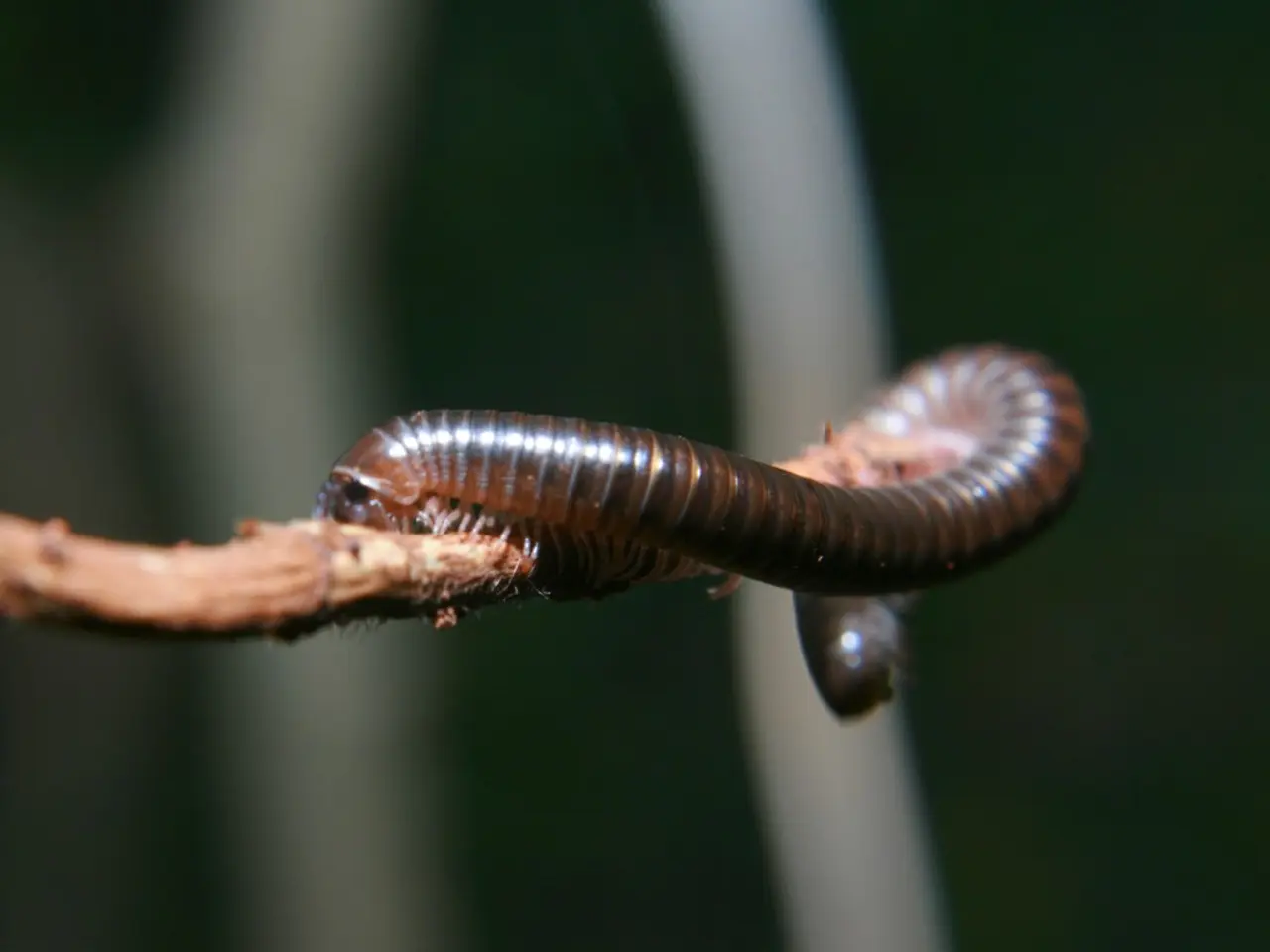Opioid treatment alternatives may lie in the exploration of parasitic worms, as suggested in recent findings.
In a groundbreaking study, researchers are investigating the role of a protein called TRPV1+ in mice infected with the parasitic worm Schistosoma mansoni. The findings could potentially lead to new treatments for schistosomiasis, a tropical disease that affects millions worldwide.
Schistosoma mansoni, a parasitic worm, burrows into the skin, often without causing noticeable symptoms such as pain, itching, or rashes. However, the worm has developed a cunning strategy to evade the immune system's pain sensors. It secretes as-yet-unidentified molecules that block TRPV1+ pain receptors, effectively turning off the host’s pain alarm and allowing the parasite to infect without triggering strong immune responses.
These molecules, which are surface-associated helminth-derived molecules, suppress TRPV1+ activation in sensory neurons, preventing pain signals from being transmitted to the brain. This discovery holds promise for developing non-opioid painkillers and preventive or therapeutic agents against schistosomiasis by modulating TRPV1+ activity.
TRPV1+ plays a key role in sending signals that the brain interprets as heat, pain, or itching. Its activation leads to the rapid mobilization of immune cells that cause inflammation, which helps to block the parasite's entry through the skin. However, Schistosoma mansoni suppresses TRPV1+ to successfully infect its host.
The research, published in The Journal of Immunology, suggests that identifying and isolating the molecules used by Schistosoma mansoni to block TRPV1+ activation could present a novel alternative to current opioid-based treatments for reducing pain. Dr. De'Broski R. Herbert, Professor of Immunology at Tulane School of Medicine, spearheads this research.
The ultimate goal is to develop these proposed treatments into a reality. The molecules that block TRPV1+ could also be developed into therapeutics that reduce disease severity for individuals suffering from painful inflammatory conditions.
Further research into Schistosoma mansoni could inspire future pain medications. The worm's ability to suppress TRPV1+ could provide insights into the development of new drugs for managing pain and inflammation.
Schistosomiasis, caused by worms like Schistosoma mansoni, is the second most dangerous parasitic disease after malaria. Understanding and manipulating the molecules that block TRPV1+ could lead to significant advancements in treating and preventing this debilitating disease. The research is ongoing, and the exact nature of these molecules and their mechanisms is yet to be fully understood. However, the potential implications for global health are undeniable.








